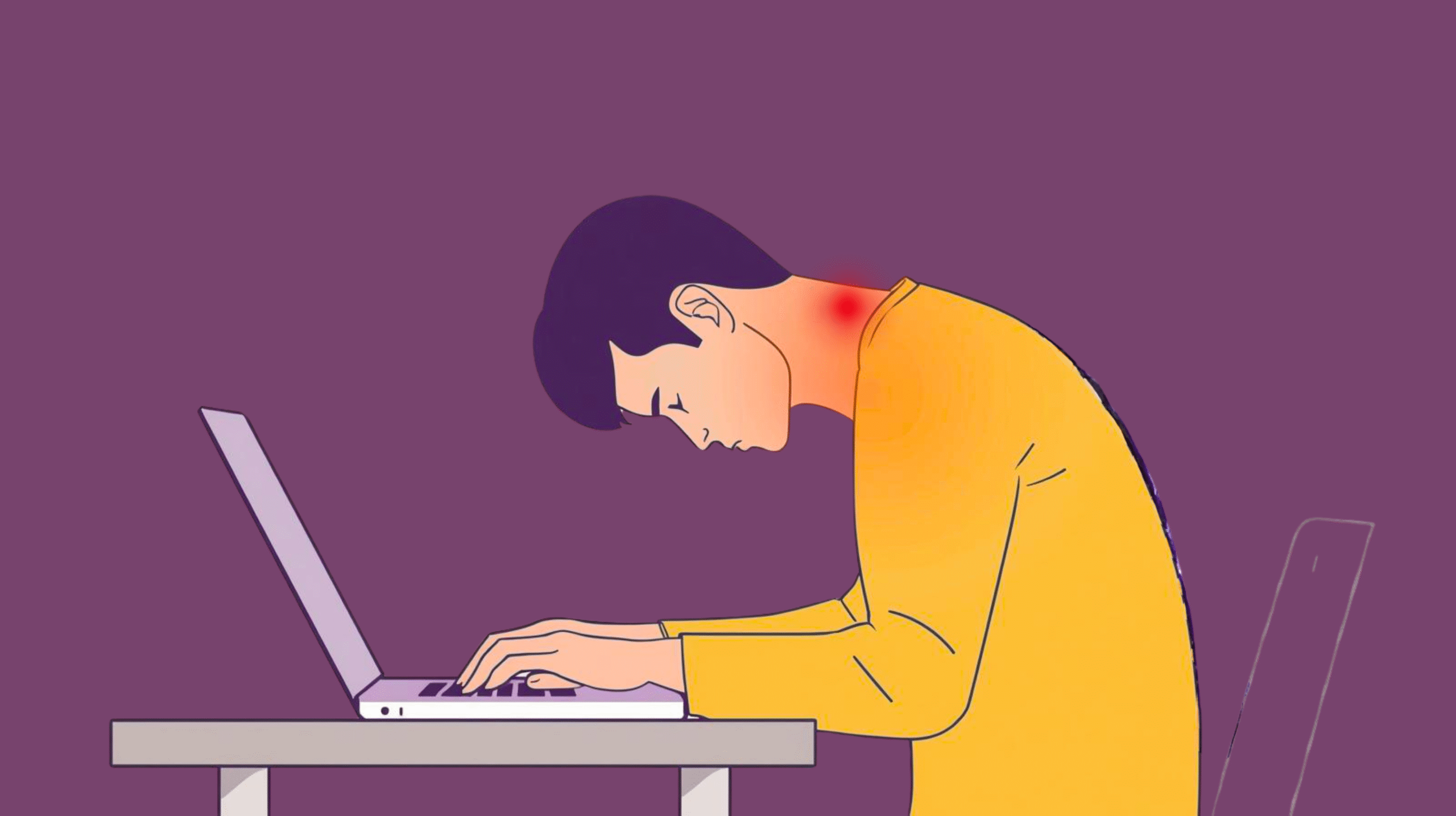In the age of smartphones, laptops, and long office hours, neck and shoulder pain is almost a normal expectation. Many people accept discomfort as part of their lifestyle, unaware that small changes in posture can significantly reduce pain and prevent long-term problems.
Poor posture is more than just slouching. It affects:
- Muscle balance, causing some muscles to overwork while others weaken.
- Joint alignment, leading to wear, inflammation, or nerve compression.
- Spinal health, which can impact overall movement, energy levels, and even mood.
The purpose of this article is to educate readers about the most common posture mistakes, their impact on neck and shoulder health, and actionable steps to correct them. By the end, you’ll understand how small adjustments and daily practices can create lasting relief and improved physical well-being.
Understanding Posture and Its Impact
What Is Good Posture?
Good posture involves neutral spine alignment, where the natural curves of the cervical, thoracic, and lumbar spine are maintained. Key elements include:
- Head: aligned with shoulders, not protruding forward.
- Shoulders: relaxed and slightly back.
- Pelvis: neutral position, not tilted excessively forward or backward.
- Feet: evenly grounded, supporting the body.
This alignment minimizes strain on muscles and joints, improves breathing, circulation, and digestion, and allows for optimal movement efficiency.
Why Poor Posture Causes Pain
Poor posture develops over years of repetitive habits and sustained positions. It can cause:
- Muscle fatigue: overworked muscles tighten and weaken.
- Joint compression: misalignment adds stress to cervical, thoracic, and shoulder joints.
- Nerve irritation: prolonged compression can trigger tingling, numbness, or shooting pain.
Long-term poor posture can lead to chronic pain, reduced flexibility, headaches, and even spinal degeneration [1].
Anatomy of Neck and Shoulder Pain
Several muscles and joints are particularly affected by posture:
- Trapezius and Levator Scapulae: Upper back and neck muscles that tighten when shoulders slump forward.
- Rhomboids: Weakness here contributes to rounded shoulders.
- Deltoids: Overused during asymmetrical tasks like carrying bags on one shoulder.
- Cervical Spine: Forward head posture increases load on cervical vertebrae, often causing stiffness and headaches.
Understanding these muscles helps identify why certain postures cause specific types of pain and tension.
Common Posture Mistakes Causing Neck Pain
1. Forward Head Posture
Forward head posture occurs when the head juts ahead of the shoulders, a common result of computer and phone use. Every inch the head moves forward adds extra weight and strain on the neck muscles, increasing the risk of chronic pain, stiffness, and headaches.
Example: Looking down at your phone for 2 hours daily can place up to 60 pounds of pressure on the cervical spine over time.
2. Slouching / Rounded Shoulders
Slouching compresses the thoracic spine and weakens upper back muscles. Rounded shoulders cause tension in the neck, trapezius, and levator scapulae muscles, resulting in discomfort, reduced shoulder mobility, and even breathing restrictions.
3. Cradling Phone Between Shoulder and Ear
Holding the phone between your ear and shoulder creates uneven load on neck muscles. This can:
- Overwork one side of the neck and shoulders.
- Cause tension headaches.
- Lead to nerve compression if repeated frequently.
4. Poor Desk Setup
Incorrect monitor height, keyboard placement, or chair settings force your body into unnatural positions.
- High or low monitors increase neck strain.
- Keyboard too far away causes shoulder overreach.
- Chair without lumbar support leads to slumping and poor spinal alignment.
5. Sleeping Positions
Sleeping on your stomach or using a pillow that’s too high or low misaligns the cervical spine. Over time, this leads to neck stiffness, shoulder pain, and headaches upon waking. Side or back sleeping with proper support is recommended.
Common Posture Mistakes Causing Shoulder Pain

1. Hunching Forward
Reaching forward or overhead frequently, especially without proper support, strains shoulder muscles. This posture can lead to:
- Rotator cuff injuries
- Shoulder impingement
- Reduced range of motion
2. Carrying Heavy Bags on One Shoulder
Unequal weight distribution stresses the trapezius and deltoid muscles, creating muscular imbalance and long-term shoulder discomfort. Regularly switching sides and using backpacks or crossbody bags can help [2].
3. Repetitive Movements
Typing, mouse use, and mobile scrolling are repetitive movements that create tension in the shoulders and upper back. Weak shoulder stabilizers can result in pain and postural imbalance.
4. Sedentary Lifestyle
Lack of movement weakens shoulder stabilizers and scapular muscles. This inactivity increases susceptibility to pain and limits recovery from minor postural mistakes. Regular stretching and strength training can mitigate these effects.
Corrective Strategies for Better Posture
Ergonomic Adjustments
- Adjust chair, desk, and monitor to maintain neutral spine.
- Use lumbar support and footrests as needed.
- Keep shoulders relaxed and elbows at 90°, monitor at eye level.
Stretching Exercises
- Neck: chin tucks, side bends, rotations.
- Shoulders: scapular retractions, shoulder rolls.
- Chest: doorway stretches to counteract forward slouching.
Strengthening Exercises
- Upper back: rows, reverse flys to strengthen rhomboids and trapezius.
- Core: planks, bridges for spinal support.
- Rotator cuff: external rotations to stabilize shoulders.
Daily Habits and Awareness
- Take breaks every 30–60 minutes during desk work.
- Avoid prolonged phone use in a single position.
- Check posture regularly throughout the day.
Sleep and Rest Adjustments
- Use a pillow that supports natural cervical curves.
- Avoid stomach sleeping; side or back is preferred.
- Ensure the mattress supports spine alignment.
Preventing Neck and Shoulder Pain Long-Term
Preventing neck and shoulder pain is much easier than treating chronic discomfort once it develops. Long-term prevention relies on awareness, movement, ergonomics, and overall physical conditioning. By integrating these habits into your daily routine, you can support spinal health, maintain muscle balance, and reduce the risk of pain or injury over time.
Incorporating Movement Breaks
Sitting or standing in one position for extended periods is a major contributor to neck and shoulder strain. The human body is designed for movement, and even small breaks throughout the day can prevent stiffness and tension.
Practical Tips:
- Micro-stretches every 30–60 minutes: Simple shoulder rolls, neck rotations, or standing back extensions can relieve tension and improve blood flow.
- Walk breaks: Walk to a colleague’s desk or take a 5-minute break every hour. Movement boosts circulation, which reduces muscle fatigue and promotes nutrient delivery to spinal tissues.
- Dynamic stretches: Incorporate movements like arm circles, cat-cow stretches, or gentle twists to maintain mobility in your spine and shoulders.
Why it works: Movement interrupts static postures that cause muscular imbalances. It also engages postural muscles, strengthening them over time to better support the neck and shoulders.
Ergonomic Workstation Setup
A properly designed workstation prevents prolonged strain and keeps your posture aligned naturally. Many posture-related problems stem from improperly positioned monitors, keyboards, or chairs.
Practical Tips:
- Monitor at eye level: Avoid craning your neck upward or downward. The top of the screen should align with your eye line.
- Chair support: Use a chair with lumbar support that keeps your spine neutral. Adjust seat height so your feet rest flat on the floor.
- Keyboard and mouse placement: Keep elbows bent at 90° and close to your body to prevent reaching forward, which can strain shoulders.
- Document holders: Place papers or references at eye level to prevent head tilting or twisting.
Why it works: Ergonomic setups align the spine, reduce muscular overuse, and prevent the repetitive stress that leads to pain over months and years.
Maintaining Overall Fitness
Strong, flexible muscles are the foundation of good posture. Weak postural muscles especially in the upper back, shoulders, and core, make you more prone to slouching and tension.
Practical Tips:
- Strengthening exercises: Include rows, reverse flys, planks, and shoulder stabilization exercises 2–3 times per week. These strengthen key muscles that support spinal alignment.
- Flexibility training: Stretch the chest, neck, and shoulder muscles daily to counteract tightening from sitting or repetitive tasks.
- Full-body conditioning: Engage in regular cardiovascular exercise to improve circulation, which supports tissue health and muscle recovery.
Why it works: Strong muscles act like scaffolding for your spine, keeping it aligned naturally even during long workdays or repetitive activities. Flexibility ensures muscles do not tighten into poor postural patterns [3].
Mind-Body Practices
Integrating mind-body practices can significantly enhance posture awareness, reduce tension, and prevent pain caused by stress or poor alignment.
Practical Tips:
- Yoga: Improves spinal mobility, strengthens postural muscles, and stretches tight areas like the chest and shoulders. Poses like Cobra, Cat-Cow, and Child’s Pose are particularly effective.
- Pilates: Focuses on core strength, postural awareness, and controlled movement, all of which support neck and shoulder health.
- Tai Chi: Combines gentle movements with balance and mindfulness, helping maintain upright posture and reduce stiffness.
- Meditation and breathing exercises: Chronic stress can lead to tension in the neck and shoulders. Mindful breathing and meditation reduce cortisol levels and help relax overworked muscles.
Why it works: Mind-body practices train both the body and brain to recognize and correct poor posture subconsciously. With time, you’ll naturally maintain better alignment, even outside exercise sessions.
Lifestyle and Habit Modifications
Long-term prevention also involves making small lifestyle adjustments that cumulatively reduce strain on the neck and shoulders.
Practical Tips:
- Sleep posture: Use pillows that support natural cervical curvature and avoid sleeping on the stomach. Side or back sleeping is optimal.
- Phone and tablet usage: Hold devices at eye level to prevent forward head posture. Limit scrolling sessions and take breaks.
- Bag carrying: Distribute weight evenly by using backpacks or crossbody bags rather than one-shoulder bags.
- Hydration and nutrition: Proper hydration supports muscle function, while anti-inflammatory foods can help reduce joint and muscle stiffness.
Why it works: Small daily habits, when repeated consistently, prevent cumulative stress on muscles, joints, and nerves, which is the leading cause of posture-related pain.
Conclusion
Neck and shoulder pain from poor posture is preventable and reversible. Recognizing common mistakes, making ergonomic adjustments, strengthening key muscles, and practicing mindful daily habits can alleviate pain and protect your spine. Good posture improves not only physical well-being but also confidence, energy, and overall quality of life.
Looking for more health and wellness solutions? Don’t miss these related guides:-
- How microbreaks and lumbar support together can save your spine
- How pillow height affects sleep quality
Frequently Asked Questions:
1. What are the most common posture mistakes causing neck pain?
Forward head posture, slouching, poor desk setup, and improper sleeping positions are major contributors.
2. How does forward head posture affect shoulders?
It increases tension on the trapezius and upper back muscles, often leading to rounded shoulders and stiffness.
3. Can poor desk posture lead to chronic pain?
Yes, long-term misalignment strains muscles, compresses joints, and can result in chronic neck and shoulder pain.
4. What exercises help correct slouching and rounded shoulders?
Scapular retractions, reverse flys, rows, chin tucks, and chest openers strengthen weak muscles and open tight areas.
5. How can I prevent neck and shoulder pain while using a phone?
Hold the phone at eye level, avoid cradling it between your shoulder and ear, and take frequent breaks to stretch and move.
References
- American Physical Therapy Association. (2021, November 1). Workplace ergonomics. APTA Magazine. https://www.apta.org/apta-magazine/2021/11/01/compliance-matters apta.org
- Physio-Pedia. (n.d.). Ergonomics for daily life. https://www.physio-pedia.com/Ergonomics_for_Daily_Life Physiopedia
- Izraelski, J. (2012). Assessment and treatment of muscle imbalance: The Janda approach (P. Page, C. Frank, & R. Lardner, Eds.). Human Kinetics. https://www.pmc.ncbi.nlm.nih.gov/articles/PMC3364069/



















